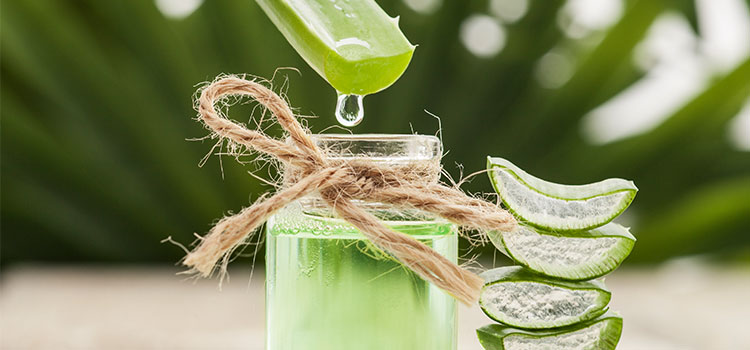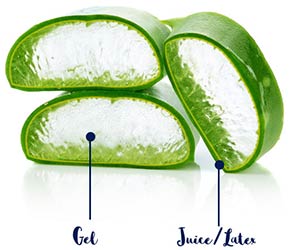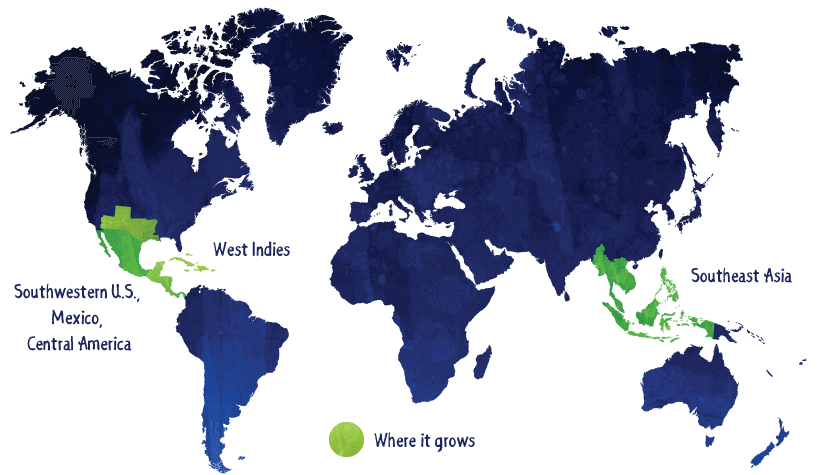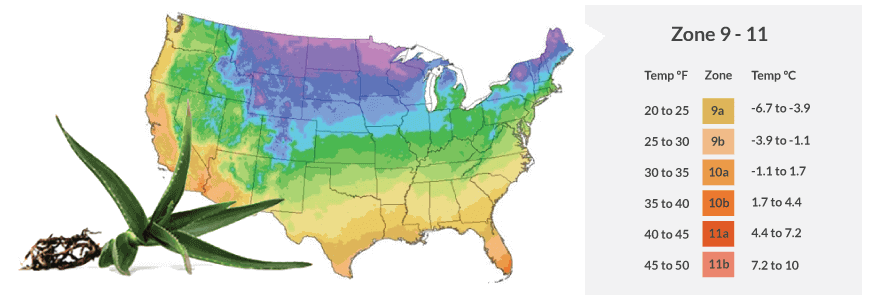More Holistic Health Articles
The history and origins of aloe vera

Aloe vera’s rise to superfood status has been a long time coming.
Often extolled for its soothing qualities, aloe vera is most commonly used as a topical ointment for burns, sun damage and skin abrasions. Most of us are familiar with the presence of aloe vera in cosmetics and skin creams for its moisturizing and anti-aging effects. However, many people who live according to a natural health philosophy have long viewed the plant as a potent superfood.
That’s right. As kale and blueberries quickly ascended to the top of superfood lists, aloe vera has remained a quiet competitor. So where does it come from and what makes it such a powerful plant? Keep reading to gain a deeper understanding of the plant’s history, makeup and how it’s cultivated.
Did you know?

There are two parts to an aloe vera leaf: Gel and leaf juice (not to be confused with aloe juice in stores). The gel is what most people are familiar with. It’s the odorless and clear liquid at the innermost part of the leaf. Aloe latex, or juice, seeps from the leaf when cut. It’s yellow in color and has a bitter taste. When ingesting aloe, the gel is the safest part of the plant. The latex has laxative properties and can cause serious or even fatal health complications if used too often.
Aloe vera throughout history
From Cleopatra to Christopher Columbus, some of history’s most famous figures relied on aloe vera for its healing properties. Sometimes referred to as the “burn plant,” “lily of the desert” or the “wonder plant,” it even earned the moniker “the plant of immortality” from the Egyptians.
Ancient civilizations eventually brought the plant to the Mediterranean region and other warm climates around the world.
| 2100 BC | A record of aloe vera’s benefits appear on a Mesopotamian tablet. |
| 1550 BC | A description of aloe vera’s medicinal purposes is documented. An Egyptian text details how to use aloe vera for both internal and external symptoms. |
| 70 AD | The Greeks use aloe vera to treat wounds, hair loss and other issues. |
| 1655 | First mention of aloe vera in the English language; John Goodyew translates Dioscorides’ Medical treatise De Materia Medica. |
| 1820 | The U.S. Pharmacopeia says aloe vera can be used to protect skin. |
| 1930s | Aloe vera is used to treat radiation dermatitis. |
| Today | Aloe vera is commonly used in many countries for topical and internal uses. |
Where aloe vera grows
Although it can be grown indoors just about anywhere, aloe vera thrives in various regions of the world, including Southwestern U.S., Southeast Asia, the Bahamas, Mexico, Central America and the West Indies.
Although the precise origins of the aloe vera plant were unclear for a long time, scientists now think that it originated somewhere on the Arabian Peninsula. Ancient civilizations eventually brought the plant to the Mediterranean region and other warm climates around the world. They also suggest that its ancient popularity and market dominance could be partly due to its proximity to historic trade routes.

Succulent plants
Aloe vera is part of the succulent family, a type of plant with shallow and intricate root systems that allow for quick water absorption. Succulents can store water for an extended period of time making them an easy-to-maintain plant.
Succulents are known for their hardiness and have a unique self-repairing ability. If damaged, succulent leaves seal off the cut or wound using its internal gel. The leaf will continue to grow from the base of the plant despite the damage.
Aloe vera no longer grows in the wild. The ancient plant needs to be cultivated instead; you’ll often find it in terra cotta pots on a kitchen sill or in the front yard of a desert home.
Aloe vera taxonomy and etymology
Aloe vera is one of over 400 species within the Aloe genus. Its full botanical name is Aloe barbadensis miller and it is a member of the Asphodelaceae (Liliaceae) family which includes a diverse array of other flowering plants. The word “aloe” comes from Arabic word “alloeh” meaning a “shining, bitter substance.” “Vera” derives from Latin’s “verus” meaning “true.”
Growing aloe vera yourself
Don’t have a green thumb? No problem. Aloe, like other succulents, is easy to keep alive and healthy because it doesn’t need much maintenance.

Fast Facts:
+ Aloe can grow outside in zones 9-11 or indoors year-round
+ Place potted plants outside after the last frost
+ Soil should be sandy
+ Harvest mature leaves only
Aloe vera: an ancient superfood
With so many so-called superfoods out there, the meaning of the word can become diluted. As more whole foods earn the title, consumers tend to get skeptical that it’s just another diet fad. However, it’s safe to say aloe vera is one of the original superfoods.
Aloe vera is full of good stuff—75 active components to be exact. The naturally-occurring vitamins, minerals and amino acids in the plant are essential for good health. To understand how aloe vera can be a disease-fighter, it’s best to understand what’s exactly inside the clear gel.
Vitamins
Aloe vera includes several necessary vitamins: A, C, E, B1, B2, B3, B6 and B12.
Vitamins A, C and E are antioxidants and help fend off free radicals which can contribute to cancer, heart disease and other illnesses.
| Vitamin A | Integral for a strong immune system and bone growth. It helps fight off viral or bacterial threats to the body. |
| Vitamin C | A powerhouse vitamin that is believed to protect against cancer and cardiovascular problems. It also supports the immune system. |
| Vitamin E | May protect against heart disease while promoting a strong immune system. |
| B1 Vitamin | Also known as thiamine, B1 plays a role in digestion and contributes to a healthy nervous and immune system. |
| B2 Vitamin | Goes by the name riboflavin and works as an antioxidant. B12, like other B vitamins, provides the body with energy by creating fuel from food. It also plays an important role in maintaining a strong nervous system. |
| B3 Vitamin | Also known as niacin, B3 vitamins are used to treat high cholesterol, migraines and diabetes. It’s also used to cleanse the body of toxins and promote good digestion. |
| B6 Vitamin | Important to many of the body’s systems, including the immune, cardiovascular and digestive systems. The vitamin is also connected to the serotonin and dopamine process. |
| B12 Vitamin | Primarily found in animal products, B12 is necessary for healthy blood cells and helps make DNA. |
Minerals
Aloe vera contains numerous different minerals which are essential to the proper functioning of many different enzyme systems in our bodies.
| Calcium | Famous for its role in strong bones, calcium is also vital to the cardiovascular and nervous systems. |
| Sodium | Often discussed as a negative mineral, sodium is essential to blood pressure, muscles and nerves. |
| Iron | Makes up blood cells and proteins in the body. It’s necessary for energy. |
| Magnesium | This mineral has a big job; it’s necessary for hundreds of processes in the body, including blood glucose regulation and keeping the immune system strong. |
| Potassium | Helps clean cells out, protects blood vessels and is thought to help lower the risk of heart disease. |
| Copper | Needed for growth and general health. This mineral helps maintain healthy heart function and is thought to help prevent osteoporosis. |
Anthraquinones
Aloe contains 12 organic compounds called anthraquinones. Aloin, which causes a laxative effect, and emodin help with pain relief and work as antibacterial and antiviral agents. Anthraquinones are often removed from commercial aloe products.
Polysaccharides
Aloe vera contains a unique type of sugar called Acemannan. This polysaccharide is believed to have antiviral, antitumor and tissue regeneration effects.
Fatty Acids
Aloe vera consists of four plant-based fatty acids which are shown to have anti-inflammatory and antiseptic qualities. The acids also contain pain-relieving components.
According to the National Institutes of Health (NIH), aloe vera contains 20 amino acids, seven of which are essential.
How you can use aloe vera
Whether you’re buying aloe vera leaves at your local health food store or growing the plant yourself, there are many different ways you can take advantage of the plant’s superpowers to make various homemade remedies and products. Given its popularity as a topical skin-soother, it’s no surprise that aloe gel can be used to make things like shaving gel, skin salves and face scrubs. When prepared correctly, aloe vera gel can also be used in many recipes from smoothies to salads.
Updated: April 1, 2024
Aloe vera infographic

